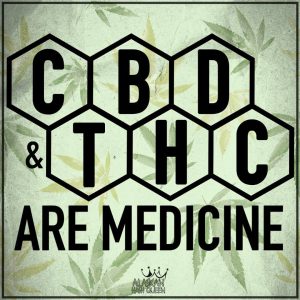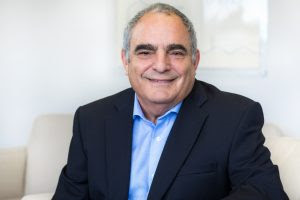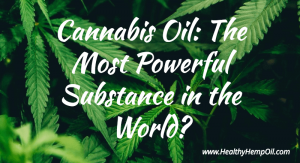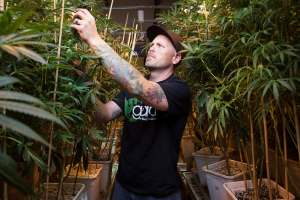https://healthyhempoil.com/hemp-oil-vs-cannabis-oil/
I have many blogs in this website about cannabis!!!
Hemp vs. Cannabis: What’s the difference?
Higher functioning cancer survivors learn how to engage themselves into goal-directed conversations and ask the right questions as they move through a complex situation.
The Ultimate Guide to Making Cannabis Oil Hosted by Jeff Ditchfield, author of The Medical Cannabis Guidebook. https://www.youtube.com/watch?v=z58FiH87-6w
In today’s world, there is little that causes more dissent among the ranks of populations everywhere than religion, politics and the legalization of marijuana. But, in a world where everything that falls under the label of “cannabis” is seemingly mistakenly deemed a psychotropic drug, wherein lies hemp? The three terms – cannabis, hemp and marijuana – are often used interchangeably to significant error.
To understand the differences between these terms, first let’s go through a brief biology lesson. Everything known living thing is categorized in the primary biological taxonomy of the same name. “Life” refers to anything that possesses some sort of biological process. From there, things get more complicated and even more precise, going down in the order of domain, kingdom, phylum, class, order, family, genus and species. The official taxonomy of the cannabis plant is as follows:
– Kingdom Plantae (Plants)
– Subkingdom Tracheobionta (Vascular plants)
– Superdivision Spermatophyta (Seed plants)
– Division Magnoliophyta (Flowering plants)
– Class Magnoliopsida (Dicotyledons)
– Subclass Hamamelididae
– Order Urticales
– Family Cannabaceae (Hemp family)
– Genus Cannabis L. (Hemp)
– Species Cannabis sativa L. (Marijuana)
For the purpose of this article, we will focus on the latter two on that list (hemp and marijuana). The genus taxonomy is of particular import for botanical nomenclature, as it is the generic name or epithet and is the first part of the name of the species and lower taxa. It is always capitalized and followed by the specific name, i.e. “Cannabis sativa.” Other strains are Cannabis indica and Cannabis ruderalis. Most medical marijuana is a hybrid of sativa and indica, thus why the species of Cannabis sativa X indica is often seen.
The Underlying Difference Between Hemp Oil and CBD Oil
https://www.solcbd.com/blogs/cbd-science/117837829-the-underlying-difference-between-hemp-oil-and-cbd-oil
Cannabis vs. Marijuana
The difference between these two words is just that, a difference between words.
There is no real evidence that there are any physical or biological differences between cannabis and marijuana. Cannabis is the real name of the plant, the scientific name.
Cannabis comes in many different forms and genus. The main strains of the plant are Cannabis Indica, Cannabis Sativa, and Cannabis Ruderalis. The plant can be used for many different things, as a recreational or medical drug, as hemp, as oil, the list goes on. This is Cannabis the plant, cannabis the little slice of nature just like a fern or a foxglove.
Marijuana however is a nickname of Mexican origin, coming from the word marihuana. Now this, since it is simply a widely spread colloquialism, means what it is associated with. So by this reasoning marijuana is the medical or recreational drug. This is what the name has been used for and so that is what it is. There is no physical difference between the two plants; there is simply the difference that the titles give them.
Usually cannabis is thought of as a slightly more official term, probably because it is. So when people think of it they think of medicine or hemp rather than just smoking it. It is the term that botanists or doctors would use rather than drug dealer.
The word cannabis originated from the Greek κάνναβις (kannabis), the Latin name is the same. It is really a flowering herb that happens to have a cerebral effect when smoked; it was not originally used as a drug. It was used for many different things such as materials, papers, medicines, etc. Then people realized the effect it had on the human body when inhaled and thus the drug was born.
What we would term as marijuana is made from the dried flowers on the cannabis plant, hemp is rubbed and woven from the strong fibers of the stem, and oils are made from the seeds. In this way I suppose there is a slight difference, cannabis is the entire plant which means that the drug, still often called cannabis, is a bi product of the plant and is what we would call marijuana. It is not the technical name however, as an accepted common parlance, one can be said to beget the other.
The definitions of what is classified as marijuana, cannabis or hemp are quite clear – at least according to the codes of the United States. Under U.S. law, cannabis is the plant itself, and hemp and marijuana are specific parts of the plant. Hemp refers to the sterilized seeds, stems, stalks and roots. Marijuana is in reference to the viable seeds, leaves and flowers.
While this is the easiest way to explain it, research has shown that the differentiation between hemp and marijuana goes much deeper, and their traditional names are not necessarily indicative of the true genetic makeup of these plants. Through trait-mapping and genotyping, researchers have found the differences extend far beyond the genes involved in the production of THC.
Unfortunately, marijuana has come to be the all-in-one term for the cannabis plant and all of its useful parts. When one refers to marijuana or any of its other common names or derivatives (Mary Jane, pot, hash, hashish, whacky-tobacky, etc.) they are referring to the leaves and flowering portions of the plant that contain many cannabinoids, which have both mental and physical effects on the human body when ingested. Marijuana with these effects is produced on cannabis plants with greater than 0.3 percent tetrahydrocannabinol (THC), which is the principal psychoactive portion of the plant. Some strains can go up to as much as 20 percent. Concentrations of THC are largely dependent on how it is ingested as well. The average for marijuana is 1-5 percent, 5-10 percent for hashish and 20 percent for hashish oil.
THC & CBD are just 2 of over 180+, Cannabinoids which all work synergistically with each other, and potentiate the effects of one another. Along with the Terpenes, saponins & carotenoids that all work symbiotically together in a holistic dynamic, the way God Designed. God Creates; Man Dissects. God created a perfect plant, man is trying to pick and choose what extractions have value & why, which is completely Flawed. God created Cannabis, not “CBD Oil” I Love & Respect you Vaughn, please steer clear of the Reefer madness Propaganda though. In this video, we share the differences between marijuana and hemp plants. Plus the uses of CBD oil and how it can help heal some of the biggest complaints including chronic pain, anxiety, sleep, depression, digestive disorders, tumors, cancer, and more. https://www.youtube.com/watch?time_continue=4&v=L-oGEn_a5E0
Typically, marijuana refers to the buds and leaves of the Cannabis sativa or Cannabis indica plants. The cannabis plant contains more than 500 chemicals, including delta-9-tetrahydrocannabinol (THC), the main psychoactive chemical [source: Mehmedic et al.]. Cannabis impairs memory during and between uses, although the restorative effects of long-term abstinence remain unclear. In addition, during use, it adversely affects motor coordination, attention and judgment, increases heart rate and raises levels of anxiety. Studies also show that marijuana smoke contains irritants and cancer-causing chemicals typically associated with cigarettes [sources: Hall and Solowij; NIDA]. In this article, you will learn about marijuana, why this drug is so popular and what effects it has on your mind and body. https://science.howstuffworks.com/marijuana.htm
Hemp
The recreational use of the cannabis plant to produce a “high” has overshadowed the myriad of industries that hemp is viable for, and this is precisely how and why the plant has and continues to receive such bad press. Hemp comes from cannabis plants with less than 0.3 percent THC. The petrochemical and textile industries realized they had a lot to lose monetarily if hemp came into widespread production, and thus the corporate elite set into motion a literal smokescreen of lies to bulldoze the public opinion into outlawing this productive plant in its entirety by including it in the Uniform Narcotic Drug Act in 1932.
Hemp is indigenous to Central Asia, and the cultivation of the crop for fiber can be traced back as far as 2800 BCE in Ancient China. Modern researchers have determined what ancient civilizations already knew – that hemp fiber is durable and extremely strong. Under heavy scrutiny, they found that although a myriad of factors affects the tensile strength of hemp, single fibers obey Hooke’s law – which refers to the elastic behavior of solids in direct proportion to an applied force.
It is for this reason that industrial hemp fiber is viable for many uses, including artificial sponges, burlap, cable, canvas, linens and clothing, paper, rope, twine, string and yarn. Moreover, its roots and seeds produce oil that can be used for medicinal purposes, hold nutritional value for human consumption, and can be used in the production of paints, varnishes and soaps.
The cannabis plant can offer so much to the world in its varying forms. If the laws and industry allow, soon we may find it in some form or another in our everyday life, from the paper we write on and the clothes we wear to how we heal ourselves from illness & disease. https://www.cbdweb.org/medical-cannabis-guide/hemp-vs-marijuana-vs-cannabis
DISCOVERY OF ENDOCANNABINOIDS
https://www.cannabis.info/en/blog/dr-raphael-mechoulam-worlds-foremost-cannabis-researcher
DR. MECHOULAM: A BRIEF HISTORY
Dr Raefael Mechoulam was born in Sofia, Bulgaria on 05th November, 1930. Raised into an affluent Jewish family, the Mechoulam’s were eventually pushed out of their hometown due to rampant anti-semitism. In 1944, Mechoulam’s father survived his time in a nazi concentration camp, before the entire family relocated to Israel in 1949.
After switching his studies from chemical engineering to chemistry, Mechoulam’s foray into cannabis science was a natural extension of his innate curiosities and obsession with research.
Then one day in 1963 a young organic chemist in Israel named Raphael Mechoulam, working at the Weizmann Institute of Science outside Tel Aviv, decided to peer into the plant’s chemical composition. It struck him as odd that even though morphine had been teased from opium in 1805 and cocaine from coca leaves in 1855, scientists had no idea what the principal psychoactive ingredient was in marijuana. “It was just a plant,” says Mechoulam, now 84. “It was a mess, a mélange of unidentified compounds.”
Read More http://ocgreenrelief.org/medical-marijuana/science-seeks-to-unlock-marijuanas-secrets
https://www.cbsnews.com/news/colorado-pot-marijuana-60-minutes/
I found the independence of research to be an addiction from which I do not want to be cured
FIRST MAJOR BREAKTHROUGH: ISOLATION OF THC
When asked about his decision to study cannabis, Mechoulam explains his surprise on the lack of cannabinoid research that occurred before him. In fact, while morphine and cocaine isolation have been around for 150 years.
Mechoulam was the first to isolate Δ9-tetrahydrocannabinol, known by the acronym THC. THC is the most abundant cannabinoid secreted in the trichomes of cannabis plants and is responsible for emitting psychoactive effects.
Mechoulam’s original experiments were conducted in the early 1960s on hash acquired from a local police station. His results indicated the incredible psychoactive and medicinal potential of this unique plant compound. Mechoulam also successfully elucidated and isolated the second most abundant cannabinoid: cannabidiol (CBD). CBD surprised Mechoulam with its apparent medical efficacy as an anti-psychotic and possible ingredient in the treatment of chronic pain and seizures.
The discovery THC effectively kills tumors
Dr. Christina Sanchez is a molecular biologist working on cannabis and cancer research. She is a part of a larger team which has discovered that THC effectively kills tumors in both cultured cells and animal models. Thus far, their work has focused primarily on brain and breast cancers.
Here’s how she explains their work:
We started working on this project 12 or 15 years ago, and it was basically by chance. We were working with astrocytes [a cell of the central nervous system] at the time and we decided to change the model and work with astrocytoma cells, the tumoral cells.
We observed that when we treated these cells with cannabinoids, THC, the main psychoactive component of cannabis, was killing the cells in our Petri dishes. We were killing the cells. https://herb.co/marijuana/news/dr-christina-sanchez-cannabis-cancer/
CBD and THC kills cancer cells
In each cell, there are some factors of so-called ‘fatty acids interconvertible-sphingo’, which controls the cell’s life and death. These factors are called ‘sphingo-fatty acid Rheostat’ (SR). If the internal ceramide (a chemical of this) is high, so is cell death (apoptosis) safe while cell activity is high at low levels of ceramide.
When THC connects to the CB1 or CB2 receptors in the cancer cell, it causes an increase in ceramide synthesis that controls against cell death. A normal, healthy cell does not produce ceramide, if the THC is present, and is therefore not affected by the cannabinoid.
The cancer cells die – not because of cell poison – but because a small shift in the cells mitochondria. Mitochondrias are cell’s ‘power center’. In most cells, there is a cell nucleus and mitochondria, as well as several other organelles in the cell. Mitochondria are to produce energy (ATP) to the cell. As ceramide is increased, thereby increasing SR, at the same time increases the mitochondrial permeability of cytochrome, which is an important protein in energy syntheses. Cytochrome C is pushed out of the mitochondria and thereby killing the energy supply to the cell.
Ceramide also causes a re-toxic stress of the cancer cell nucleus; thereby producing a protein called p53, whose job it is to disturb the calcium metabolism in the mitochondria. As if that was not enough, so disturbs ceramide the cell’s digestive system, which produces nutrients to all cell functions. Ceramide and other sphingo fatty acids, inhibits actively possible pathways for cell survival and causes cancer cell death.
The key to this process is the accumulation of ceramide in the system, which means that when one takes a period of therapeutic amounts of CBD and THC, one maintains a metabolic pressure to cancer cell death. How can it be that the body can take a simple plant enzyme and use it for true healing in many different physiological systems?
This inner cannabinoid system exists in all ‘animal’ living where just waiting to be activated via its external cannabinoid match. Interestingly covers our own inner cannabinoid system, all cells and nerves. It is a ‘messenger’ of information that flows between our immune system and the central nervous system (CNS).
It is responsible for the protection of the nervous system and ‘fixes’ the immune system at the micro level. This is the primary control system that maintains equilibrium – our well-being.
How it gets the job done at the cellular level, and how the body produces cannabinoids?
What we see here is that the inner cannabinoids derived from nerve cells right at the synapse – the nerve end or staging. When the body is affected by example, illness or injury, it calls immediately the internal cannabinoid system and directs the immune system to heal. If these equilibrium sustaining systems weakens, is it logic that external cannabinoids can heal and soothe. They help the body in the most natural way.
To see how it works, we imagine cannabinoids as a three-dimensional molecule; one part fits the nerve and immune cell receptors like a key in a lock. There are at least two kinds of receptors CB1 (CNS) and CB2 (immune system). Generally activates CB1 the central nervous system (CNS) and CB2 activates the immune system – but it’s more complex than that. Both THC and anandamide activates both receptors. Other cannabinoids activates a second receptor. Among the strings of Cannabis, pulling Cannabis Sativa against the CB1 receptor, while Cannabis indica draw against CB2. Therefore, Sativa more nerve active while Indica are more immune active. Sativa dominated addition of THC cannabinoids while Indica primarily dominated by CBD.
It is well known that THC and CBD can be replaced / mimes of anandamide in the body. Therefore activate the mimic outer cannabinoid by stress, injuries or disease in which the body requires more internal anandamide. If the stress is of short duration, the treatment can be short-lived. If the need are persistent like cancer disease there is need for treatment to exert unrelenting pressure on the sustaining part of equilibrium systems.

THC and CBD ‘steals’ shortcut to directly inhibit tumour growth. As an aside, it has been discovered that CBD inhibits the reuptake of anandamide in the cells. Here we see that cannabidiol (CBD) helps the body to maintain its natural inner cannabinoids by inhibiting the enzyme that breaks down anandamide.
THC & CBD are just 2 of over 180+, Cannabinoids which all work synergistically with each other, and potentiate the effects of one another. Along with the Terpenes, saponins & carotenoids that all work symbiotically together in a holistic dynamic, the way God Designed. God Creates; Man Dissects. God created a perfect plant, man is trying to pick and choose what extractions have value & why, which is completely Flawed. God created Cannabis, not “CBD Oil” I Love & Respect you Vaughn, please steer clear of the Reefer madness Propaganda though. In this video, we share the differences between marijuana and hemp plants. Plus the uses of CBD oil and how it can help heal some of the biggest complaints including chronic pain, anxiety, sleep, depression, digestive disorders, tumors, cancer, and more. https://www.youtube.com/watch?time_continue=4&v=L-oGEn_a5E0
In this video, we share the differences between marijuana and hemp plants. Plus the uses of CBD oil and how it can help heal some of the biggest complaints including chronic pain, anxiety, sleep, depression, digestive disorders, tumors, cancer, and more. https://www.youtube.com/watch?time_continue=4&v=L-oGEn_a5E0
The Science of the Weed Cannabis
Jeremy Plumb has been called the “Wizard of Weed” and was voted best “budtender” in Portland, Oregon, last year. It’s no wonder: Plumb is also a virtual encyclopedia of information about marijuana’s therapeutic effects, history and chemical complexity.
http://green215.com/sites/all/files/education_articles/Science%20Cannabis.pdf
The deadliest drug in America (alcohol) is legal in all 50 states, and it’s significantly more dangerous than a range of illegal substances (marijuana) much more heavily regulated and policed. ►►https://www.youtube.com/watch?v=2-PARBOHe5I
https://www.nationalgeographic.com/magazine/2015/06/marijuana-science-drug-research-legality/
https://www.fool.com/investing/2018/08/05/better-marijuana-stock-aurora-cannabis-vs-tilray.aspx
https://hightimes.com/health/science/cbd-vs-thc-difference-between-two-cannabinoids/
https://www.nytimes.com/2014/07/31/opinion/what-science-says-about-marijuana.html
https://www.bing.com/videos/search?q=cannabis+vs+marijuana&FORM=HDRSC3
https://www.youtube.com/watch?v=UTkeWfrHUAc
Mowgli Holmes — co-founder and CEO of Phylos Bioscience — argues against relying on these definitions. His Feb. 8 lecture on the genetics of cannabis breeds at the UC Botanical Garden touched upon the difficulties that arise when trying to analyze the genealogy of cannabis.
“Plant breeding is evolution on turbo” — Mowgli Holmes
“There’s a problem in the cannabis world where no one has any idea what they’re smoking,” said Holmes during his lecture. “All the names are wrong, there’s no parliaments — it’s just very confusing.”
The reason for this confusion arises from the way cannabis has been grown over the last several decades. Remembering DR. Tamara June 1st 2016 – Colon Cancer RiP
Cannabis agricultural practices stand out compared to more traditional commercial products such as corn. Typical priorities for more mainstream crops include yield, harvest optimization, chemical traits and pest resistance. Cannabis growers, on the other hand, have 2 things in mind: diversity and THC (Tetrahydrocannabinol) levels.
“Plant breeding is evolution on turbo,” said Holmes, “but it’s also sort of like arranged marriages. People see things they like, put them together and see what they get.”
Since the 1960s, cannabis growers have been mixing different bud strains for reasons ranging from increasing THC levels to producing a specific, desired effect such as heightened creativity or a remedy for restlessness. This has resulted in what Holmes called “the poly-hybrid soup.” http://www.dailycal.org/2018/02/25/cannabis-101-science-behind-your-high/

Dr. Allan I. Frankel With over 35 years experience in Internal Medicine, and one of the world’s leading authorities on dosed cannabis medicine. Dr. Frankel applies his knowledge of all aspects of the cannabis plant and its therapeutic value to the treatment of multiple serious medical conditions.
Having participated in round table discussions on the topic of future therapies and research for medical cannabis sponsored by the California Medical Association and the Los Angeles County Medical Association. Dr. Frankel has presented multiple CME accredited Grand Rounds lectures on internal medicine & therapies in medical cannabis. https://www.bing.com/videos/search?q=dr+frankel+los+angeles+cannabis&FORM=HDRSC3
From Seed to Sale: Mindful Marijuana
Mike Yost November 4, 2014
Gaia’s master grower Phillip Hague, with some of his Afghan-derived plants. https://www.rollingstone.com/culture/culture-news/too-high-to-fail-inside-denvers-weed-boom-97964/
Product specialist Ry Prichard buttons up a white lab coat, motioning for me to do the same before taking me on a tour of Mindful’s 40,000 sq.ft. warehouse dedicated to growing the most unparalleled pot in Colorado.
Every week, the facility churns out about 100 lbs. of product, housing more than 5,000 plants with 250 different strains. As I’m lead into the vegetation room where the entire process begins, Ry tells me about Mindful’s not-so-secret weapon — lead grower Phillip Hague.
“He’s known worldwide for what he does,” says Ry. “He’s created close to 100 strains of his own, and he’s been breeding for the better part of 20 years. We’re really proud to have him as part of the operation.”
Ry explains how the vegetation room serves as a sort of genetic library where different strains are tested and cultivated, grown either from a seed or as a clone clipped from one of the mother plants.
“Phillip is able to create varieties that are more dialed in toward specific ailments, toward specific smells and flavors, and that can only happen from seed,” Ry explains. “Once you find what you want, then you want the clone.”
After 7 to 10 days — once the plants are well rooted — they are moved into the propagation room where they’re blasted with light 24 hours a day (to bolster growth) and are fed a tightly-regimented diet to perfect the product. “The cool part about our facility is that we use a fertigation system,” says Ry. “Basically it’s a big, computerized feeding system that we can dial in for specific nutrient programs for specific times for specific rooms.”
After two to three weeks, the plants are moved to one of the 11 flowering rooms, some of which can hold as many as 800 plants at a time.
I follow Ry into one of the flowing rooms surrounded by marijuana plants as tall as I am, large clusters of sticky, frosty buds populating each plant. He eagerly shows me a couple of different strains, including Mob Boss, Lavender Appalachia, Head Trip, and Triangle Kush — his favorite. “When it’s full grown and you smoke it in a joint, you taste it the entire way down, and there are very few strains that do that.”
For six to eight weeks, the plants are fed with the fertigation system as the light in each room is cycled on and off every 12 hours. The plants are then harvested and prepped for trimming. Ry walks me through a room where about 20 people wearing blue scrubs (to prevent contaminates) are quietly trimming away on the latest harvest.
“Hand trimming is a lot more delicate,” says Ry, emphasizing how Mindful’s higher-end products are trimmed by hand rather than by a machine. “You’re retaining the original structure of the bud, and you really taste and feel the difference. If you go into a dispensary and everything sort of smells the same, they probably machine-
trimmed them.”
The product is then dried, inspected, tested for THC content, vacuum-sealed, and shipped to one of their stores. The entire process takes 12 to 18 weeks depending on
the strain.
And Mindful also works to grow community ties. There’s a vegetable garden out back, the produce of which is given away at the Hiawatha Davis Recreation Center. “We go out there with a big tent and give away all the produce to people,” says Ry. “We like to give back however we can.”
Learn more online at BeMindful.today.
https://www.youtube.com/watch?time_continue=1&v=N7E6gIM-ls4
Use due Diligence to make sure no solvent is left.
Also with a new face in my crowd Aamann Degarth’s book that just came out. He makes holy grail oil practicing his method with a better option for solvent. http://www.growyourownmedicineindoors.net/
https://www.youtube.com/user/aamann
Testimony about my work for the past 4 months with hexane as a solvent. I share about the physics of working with it as a solvent in comparison to naphtha and a little about the chemistry. Also I talk a little about the difference between light and heavy naphtha. https://www.youtube.com/watch?v=T8fsF4Q6G_g
What is the Difference Between Sativa and Indica Strains? https://www.leafly.com/news/science-tech/science-of-sativa-cannabis-strains
Cannabis Gave These Cancer Patients Their Lives Back
Health / News
Cancer patients are sharing their stories to push back on the stigma surrounding the use of cannabis as an adjunct treatment. Many patients and experts believe that clinical trials on the efficacy of medical marijuana as an adjunct cancer treatment need to move faster. Patients are suffering in the interim. https://herb.co/marijuana/news/cannabis-cancer-treatment-research/
Google dennis hill stan rutner ed moore sharon kelly michelle aldrich charlotte fiji myKayla comtock landon riddle
Former Cancer Researcher Cures His Cancer With Cannabis
BY PAUL FASSA
Dennis Hill is a biochemist who worked in the research division of one of the nation’s most prestigious cancer institutes, MD Anderson Cancer Institute for 10 years a few decades ago. You could say MD Anderson is the Houston, TX counterpart to New York City’s Sloane Kettering Cancer Institute.
Dennis speaks of his MD Anderson days when he would occasionally visit the patient wing and talk with some of the cancer patients. He was saddened by their conditions, which was more from the treatments of chemotherapy and radiation therapy than the disease itself. He also noticed the visitor entourages that it took to apparently boost their morale while being treated.
He privately hoped this would never happen to him, and if it did, he would seek other treatment options if available to avoid suffering from the toxic conventional treatments he was witnessing. All this time and during his high school and college days in Houston, he was an occasional recreational pot smoker on weekends. https://realfarmacy.com/cancer-researcher-cures-cannabis/
Perhaps most exciting is the potential of five females in the cannabis extract movement – Mara Gordon, Constance Finley, Valerie Corral, Jenifer Valley, and Erin Wallace (part of the team who treated Brave Mykayla.) All are responsible for saving lives and raising awareness of this movement in unparalleled ways.
Michelle Aldrich, 66, has been working for marijuana legalization —which she defines as “the right to grow it for free in your backyard”— for most of her life. She and her husband Michael live in a comfortable old apartment near the San Francisco Marina which they moved into 40 years ago. The following is adapted from a talk Michelle gave in July 2012 to the Women’s Visionary Congress.
I had smoked cannabis since 1967 but early in 2011 I kept saying I could not get high. I was smoking a lot. I now believe that THC was going to the tumor and lymph nodes, which is why the cancer did not spread more than it had. On November 15, 2011, I was supposed to have lunch with Diane Fornbacher from the NORML Women’s Alliance.
I was too sick to go. I felt like I had the flu. http://ricksimpsonhempoil.blogspot.com/2013/03/ but the chest x-rays revealed much more – pneumonia, and a tumor. On January 12th, 2012, she was diagnosed with lung cancer. Michelle has been a cannabis activist for over 40 years, so her course of action was certain, cannabis oil. Michelle is a member of the San Francisco Medical Cannabis Task Force.
She is on the Advisory Board for Patients Out of Time and, along with her husband Michael, are recipients of the High Times Lifetime Achievement Award. Interview conducted at the Seventh National Clinical Conference on Cannabis Therapeutics, April 27, 2012 – Tucson, AZ. http://www.youtube.com/watch?v=9AZU-brG7i4&feature=youtu.be
This is the story of 54 year old Sharon Kelly, a wife and mother who was diagnosed with terminal lung cancer in December 2013. She was given no chance of survival and told she would only have months to live. Luckily the decisions she would make would prove her “doctors” wrong.
On Monday, December 16th, 2013 Sharon started complaining of a small pain on her left side around her ribs. She had gotten a massage on the previous Friday so she thought that must be a side effect of the massage. As the days went on the pain increased and when Sharon took a deep breath she started to have terrible pain in that same spot.
So she decided to get checked out and on December 19th, 2013 Sharon Kelly was diagnosed with non small cell lung cancer.
By the middle of January 2014 the diagnosis had gotten worse. The Doctors told Sharon the cancer had spread to the lining of her lung & lymph nodes and they classified it as stage IV Terminal Lung Cancer. She was given only 6-9 months to live. She asked if anything could be done like an operation or radiation but she was coldly told “the horse had bolted and was way too late to do anything”.
They told Sharon they do not offer radiation treatment for stage 4 lung cancer. Sharon was even told that chemo was “not really worth doing” as it would only make her more sick. The doctors were more concerned with her enjoying the “short time” she had left than actually trying to help her live. They had given up on her upon their diagnosis and it was obvious to Sharon they didn’t seem to want to treat her. https://oyiabrown.com/2017/10/20/the-sharon-kelly-story-how-she-beat-her-lung-cancer-with-cannabis-oil/
https://www.cureyourowncancer.org/the-sharon-kelly-story-how-she-beat-her-lung-cancer-with-cannabis-oil.html
GODOFREDO VASQUEZ – Constance Finley was mistaken for a narc by classmates at Oaksterdam University. Now, she says, a San Francisco oncologist refers to her Stage 4 cancer patients, many of whom are given weeks to live, and all of whom she says receive healing from an oil she makes from the cannabis plant.
During Carl O Helvie’s interview with Dr. Eidelman who writes the letters of recommendation in California. DR Eidelman mentioned several case studies of success with medical marijuana and also some failures. https://bbsradio.com/pod…/holistic-health-show-june-2-2018
Also Carl with Mara Gordon Interview 🙂
Dispensary owners Frank and Erin Wallace also operate Sirius Flower Farms, a cultivator that is famous for their popular “Sirius Black” strain. The flower has been featured in High Times Magazine, as well as Northwest Leaf and Dope Magazine. The couple also owns Sirius Extracts, one of the state’s most recognized and award-winning producers of fine extracts. Sirius Extracts is one of the first extraction facilities in Oregon to utilize solar power for daily operations.
“We are about sustainability and protecting the environment. We want to do this as green as we can and we want to inspire others to do the same,” beamed Frank Wallace, co-owner of Sirius Extracts. Erin Wallace, also co-owner, adds “We care about our impact on the environment. The panels, manufactured by Mr. Solar, save the company an estimated $800 a month. “The savings will allow us to be very competitive and pass the savings onto our people,” says Frank.
Whereas, Mackenzie emerged from the concourse weary but relieved. He had traveled nearly 2,000 miles since dawn, a morphine pump keeping his pain in check.
At 48, Mackenzie’s time is running out. The Iowa man, a husband and father who likes to play the bagpipe, has a rare and aggressive cancer that has spread to his liver and lungs. One of his last wishes: travel once more to Oregon, where his use of medical marijuana is legally protected. Although he credits cannabis with keeping his cancer from spreading in its initial stages, he has come to terms with the drug’s limits. He hopes to ease his symptoms and squeeze a bit more time out of a life that is slipping away.
https://www.marijuanaventure.com/tag/erin-wallace/
https://qctimes.com/news/local/crime-and-courts/article_e4cc514f-96df-5bb3-9444-d475f7027ff7.html
https://www.bizjournals.com/prnewswire/press_releases/2017/04/10/LA58345
https://www.oregonlive.com/marijuana/index.ssf/2014/07/medical_marijuana_in_oregon_be_1.html
https://www.marijuanaventure.com/erin-wallace/
Nine months ago, Mowgli Holmes, 42, started Phylos Bioscience in Southwest Portland with entrepreneur Nishan Karassik, 44, with the aim of using cannabis DNA to untangle the genetic makeup of as many marijuana strains as they can find. Their ultimate goals: to certify marijuana strains so consumers know what they’re getting and to provide pot growers with a kind of “stud book” of strain genetics to help guide their breeding.
“There is no reassurance that if you’re a Sour Diesel fan, that you could go into a dispensary and get Sour Diesel,” said Holmes, a microbiologist. “It’ll say Sour Diesel, but it will be something totally random.” https://www.oregonlive.com/marijuana/index.ssf/2014/09/marijuana_in_oregon_portland_s.html
Mara Gordon https://www.youtube.com/watch?time_continue=7&v=sBWfFm5ebpE
 Jenifer Valley and Mike Mullins, owners of approximately 24 plants rotated for continuous harvest, have won first place awards at the Oregon Medical Cannabis Awards, Higher Educational outreach through the Stoney Girl Gardens Foundation and were on the cover of the “Big Book of Buds.” Portlandsterdam University, actually in Clackamas, gives the couple even more pride. . . . than the national recognition they’ve received for their legal pot. Classes are scheduled every other weekend at the Monarch Hotel and teach about everything cannabis related, from how to distill oils to awareness of medical marijuana laws.
Jenifer Valley and Mike Mullins, owners of approximately 24 plants rotated for continuous harvest, have won first place awards at the Oregon Medical Cannabis Awards, Higher Educational outreach through the Stoney Girl Gardens Foundation and were on the cover of the “Big Book of Buds.” Portlandsterdam University, actually in Clackamas, gives the couple even more pride. . . . than the national recognition they’ve received for their legal pot. Classes are scheduled every other weekend at the Monarch Hotel and teach about everything cannabis related, from how to distill oils to awareness of medical marijuana laws.
Their studies have developed a periodic table of intended effects and also a 1 to 9 scale indicating active to sedative qualities. “We’re the No. 1 breeder in the world,” Valley said. “It’s creating a lot of medical tourism actually, because lots of people come from all over the world to get our genetic material. They get a state Medical Marijuana card with a $200 registration fee that gives the money to fund Oregon’s emergency services.” – Clackamas
Presented by Mike Mullins and Jenifer Valley Excerpts By Deborah Malka MD, PhD
Dispensary Presented by Mike Mullins and Jenifer Valley Excerpts By …
files.meetup.com/20861937/Delivery and Dosage of Cannabis Medicine.pdf
https://www.youtube.com/watch?v=njEOMJwKd-Q
Valerie Corral https://www.bing.com/videos/search?q=valerie+corral&FORM=HDRSC3
https://www.youtube.com/watch?v=c-XWFbypnwA
https://www.wamm.org/wp-content/uploads/2012/04/Milagro-Treatment.pdf
https://cheaphomegrow.com/dr-sunil-aggarwal-cannabis-palliative-care/
https://www.endoca.com/blog/medical-cannabis-can-it-play-a-role-in-palliative-care/
https://www.bing.com/videos/search?q=valerie+corral&FORM=HDRSC3



